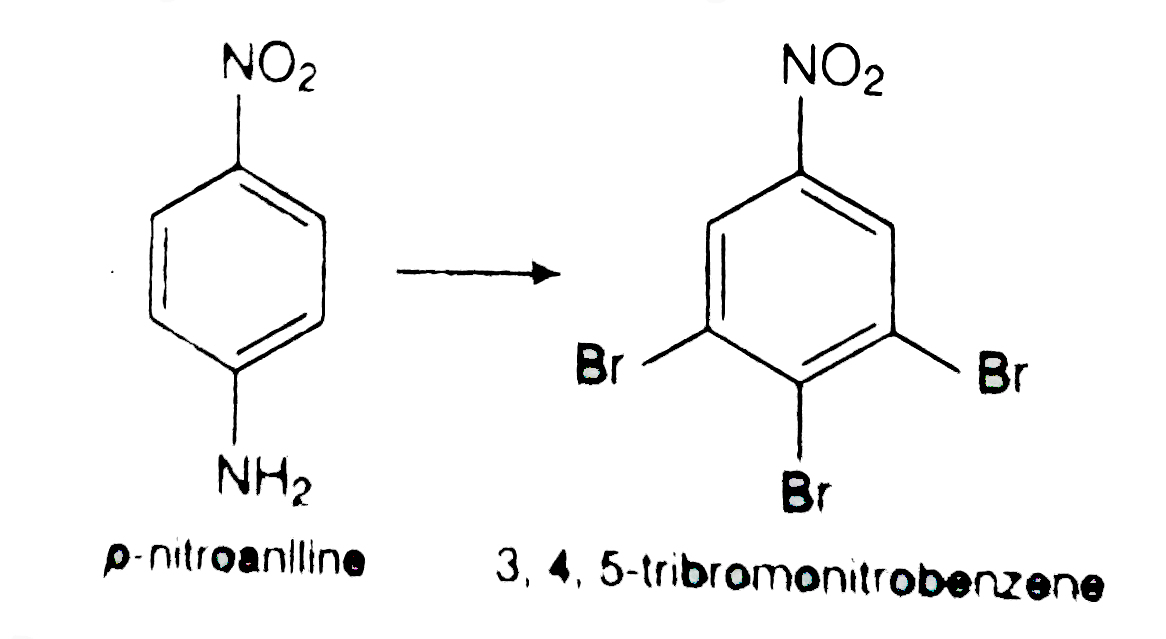How will you carry out the following conversions :
Methyl carbylamine to dimethylamine
To convert methyl carbylamine (methyl isocyanide) to dimethylamine, we can follow these steps:
Step 1: Identify the Structures
- Methyl Carbylamine (Methyl Isocyanide): The structure is represented as CH₃-N≡C (where N is nitrogen and C is carbon).
- Dimethylamine: The structure is represented as CH₃-NH-CH₃.
Step 2: Choose the Reducing Agent
We need to reduce the isocyanide group (N≡C) to an amine group (NH). Suitable reducing agents for this conversion include:
- Hydrogen gas (H₂) in the presence of a nickel catalyst (Ni).
- Sodium amalgam (NaHg) or ethanol (C₂H₅OH).
- Lithium aluminum hydride (LiAlH₄).
Step 3: Perform the Reduction
- Using H₂/Ni: When methyl isocyanide is treated with hydrogen gas in the presence of a nickel catalyst, the triple bond between nitrogen and carbon is reduced. The reaction can be summarized as:
CH3−N≡C+H2Ni−→CH3−NH−CH3
- Using NaHg or C₂H₅OH: Similarly, using sodium amalgam or ethanol will also reduce the isocyanide to dimethylamine:
CH3−N≡C+NaHg→CH3−NH−CH3
- Using LiAlH₄: Lithium aluminum hydride can also be used for this reduction:
CH3−N≡C+LiAlH4→CH3−NH−CH3
Step 4: Conclusion
After the reduction process, we obtain dimethylamine (CH₃-NH-CH₃) from methyl carbylamine (methyl isocyanide).
---
- Methyl Carbylamine (Methyl Isocyanide): The structure is represented as CH₃-N≡C (where N is nitrogen and C is carbon).
- Dimethylamine: The structure is represented as CH₃-NH-CH₃.
We need to reduce the isocyanide group (N≡C) to an amine group (NH). Suitable reducing agents for this conversion include:
- Hydrogen gas (H₂) in the presence of a nickel catalyst (Ni).
- Sodium amalgam (NaHg) or ethanol (C₂H₅OH).
- Lithium aluminum hydride (LiAlH₄).
- Using H₂/Ni: When methyl isocyanide is treated with hydrogen gas in the presence of a nickel catalyst, the triple bond between nitrogen and carbon is reduced. The reaction can be summarized as:
CH3−N≡C+H2Ni−→CH3−NH−CH3
- Using NaHg or C₂H₅OH: Similarly, using sodium amalgam or ethanol will also reduce the isocyanide to dimethylamine:
CH3−N≡C+NaHg→CH3−NH−CH3
CH3−N≡C+LiAlH4→CH3−NH−CH3
After the reduction process, we obtain dimethylamine (CH₃-NH-CH₃) from methyl carbylamine (methyl isocyanide).
Topper's Solved these Questions
- ORGANIC COMPOUNDS CONTAINING NITROGENBook:ICSEChapter:ORGANIC COMPOUNDS CONTAINING NITROGENExercise:EXERCISE (PART-II DESCRIPTIVE QUESTIONS- LONG ANSWER QUESTIONS )
Explore 57 Videos
- ORGANIC COMPOUNDS CONTAINING NITROGENBook:ICSEChapter:ORGANIC COMPOUNDS CONTAINING NITROGENExercise:ISC EXAMINATION QUESTIONS ( PART-I OBJECTIVE QUESTIONS)
Explore 7 Videos
- ORGANIC COMPOUNDS CONTAINING NITROGENBook:ICSEChapter:ORGANIC COMPOUNDS CONTAINING NITROGENExercise:EXERCISE (PART-II DESCRIPTIVE QUESTIONS- VERY SHORT ANSWER QUESTIONS )
Explore 89 Videos
- ISC QUESTION PAPERBook:ICSEChapter:ISC QUESTION PAPERExercise:PART-II(SECTION-B)
Explore 74 Videos
- P-BLOCK ELEMENTSBook:ICSEChapter:P-BLOCK ELEMENTSExercise:SOURCE BASED QUESTIONS
Explore 10 Videos
Similar Questions
How will you bring out the following conversion?

View SolutionHow will you bring about the following conversions ?

View SolutionHow will you carry out the following conversions :
An amine to ethyl isocyanide ?
View SolutionHow will you bring about the following conversions ?
Ethylamine to diethylamine
View SolutionHow will you bring about the following conversions ?
Methylamine to ethylamine.
View SolutionCarry out the following conversions :
Methyl chloride to acetic acid.
View SolutionHow will you bring out the following conversions ?
Ethene to ethyne
View SolutionHow will you bring out the following conversions ?
Ethane to ethyne
View SolutionHow will you bring out the following conversions ?
Ethyne to ethane
View SolutionHow will you carry out the following conversions :
Acetaldehyde to lactic acid.
View Solution
